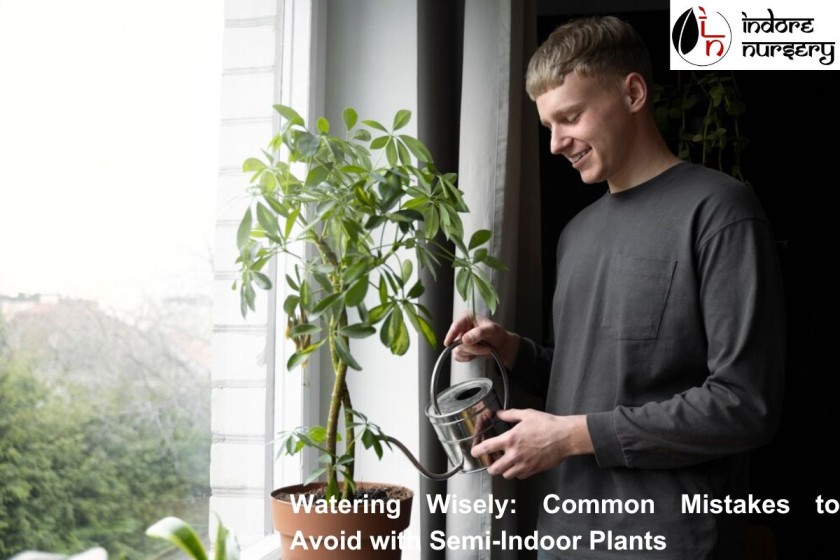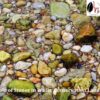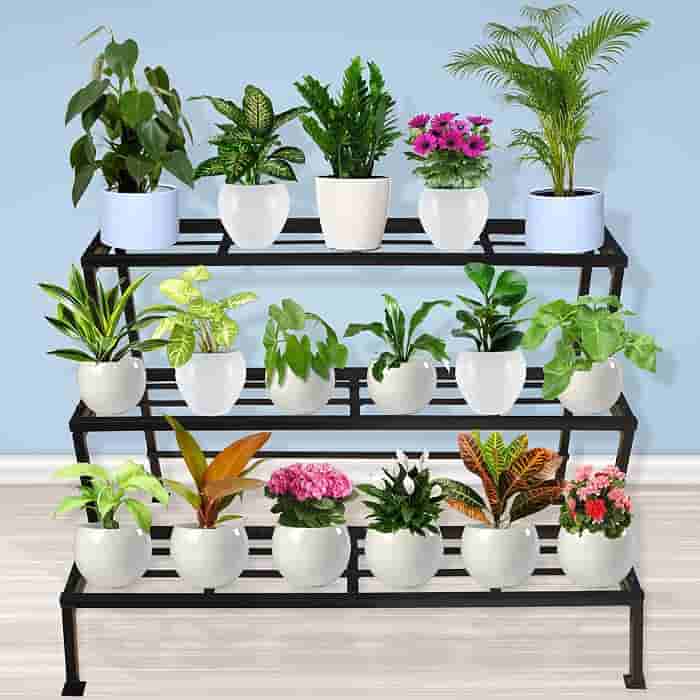Semi-indoor plants require watering to be healthy. However, too much or too little water may cause severe problems. These plants prefer a balance of light, temperature, and moisture. In this blog, we will explore common mistakes related to watering plants to ensure they remain healthy and thriving.
Overwatering Plants
The most common error in the case of semi-indoor plants is overwatering. Semi-indoor plants do not need as much water. Overwatering leads to waterlogging in the roots. It will cause root rot, a condition affecting the health of the plant in general. Check the moisture level before watering the plant. Allow the soil to dry out a little between watering.
Additionally, overwatering causes the growth of fungi. Fungi prefer moist conditions, and this may affect your plants. So, ensure that the pot has good drainage. It lets the excess water drain out and does not allow water to collect at the bottom.
Underwatering Your Semi-Indoor Plants
However, semi-indoor plants may suffer damage due to underwatering. In such cases, if the roots dry up, it makes the leaves wilt and slows down growth. Be watchful about the soil’s moisture levels; once it becomes dry to an inch of depth, you must water the plant.
Some plants will need more frequent watering than others. Plants with larger leaves or rapid growth will need more water. Therefore, one needs to research the specific water requirements of each plant. Check soil moisture regularly for the right balance.
Failure to Change the Watering Schedule with Season
Seasonal changes can affect how much water your plants need. During warmer months, plants may need more frequent watering. In contrast, cooler weather reduces the amount of water your plants require. Many people fail to adjust watering routines based on temperature and humidity changes.
Additionally, the amount of water that indoor plants may need can be different from those kept outdoors. The indoor climate is usually more stable, and this affects the water needs of the plant. Monitor environmental conditions such as temperature and humidity to adjust watering.
Using the Wrong Type of Water
Water quality is essential for the health of plants. Tap water that contains chlorine or fluoride in higher quantities can harm semi-indoor plants. Such chemicals can build up in the soil and impact the health of roots and growth. It’s always better to use filtered or distilled water.
Furthermore, water temperature is vital. Cold water stresses the roots of the plant. Additionally, very hot water damages the tender roots. For semi-indoor plants, water at room temperature is best. Hence, it is always prudent to check the temperature before giving them water.
Not considering the type of pot and drainage
The pot you decide to use with your semi-indoor plants determines the watering times. A non-draining pot will retain more water than required, which would cause root rot. Opt for pots that allow water to leak out through some holes.
Moreover, larger pots hold more water, resulting in overwatering. Choose a size of a pot suitable for the size and root system of a plant. This allows the plant to thrive without standing water at the bottom.
Watering from the Top
Watering from the top sometimes washes away the soil or causes uneven moisture distribution. Gradually water your plants, making sure that the water seeps down to the roots. Even watering prevents dry spots and helps the plant absorb moisture better.
However, you should also water the plant until the water starts draining from the bottom. This means that the water has reached the roots. This way, you avoid under-watering and ensure proper hydration.
Fixed Watering Schedule
Some people water their plants on a fixed schedule, regardless of the plant’s needs. This can lead to overwatering or underwatering. Instead of a set schedule, observe the soil’s moisture and adjust accordingly. Every plant has different needs, so it’s essential to tailor your watering approach.
Check it every few days for better safety. Furthermore, feel the upper layer to check whether it is dry or stick your finger inside the soil if the condition is a little worse. Doing so will save you from unnecessary watering and ensure happy plants.
Not Monitoring the Plant’s Response
Each plant reacts to water differently. Some will show rapid signs of stress if overwatered, whereas others may put up with it for a while. Watch for changes in leaves and soil. Yellowing leaves or wilting can be an indicator that there is an issue related to watering.
Moreover, if the plant is droopy, it can be a symptom of dehydration. Always observe the response of your plant to the watering and fine-tune it according to need. Knowing your plant’s behaviour will help fine-tune watering.
Conclusion
It seems that watering semi-indoor plants is not so difficult, but actually, it is. One must avoid the most common mistakes in the care of these plants, which include overwatering, underwatering, and poor potting. Water temperature, quality, and frequency should all match the plant’s needs.However, when visiting Indore and you are on the lookout for the best plant nursery in indore, or you might want to venture out online indoor plants in Indore, always select one offering you expert consultation in plant care.
Similarly, find an online plant nursery in Indore to get home and office environmentally suitable plants. By following these simple tips, your semi-indoor plants will thrive and flourish in your space. Happy gardening!










Recent Comments